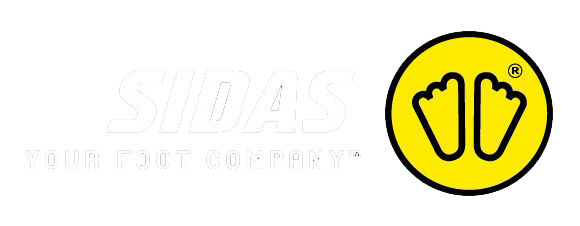Your feet might be the most underappreciated part of your body when it comes to running.
Why? Because each step and each landing starts with your feet and radiates to the rest of your body. Over many miles (say, 50k) the way your feet take that impact and send it to the rest of your body can mean the difference between a strong finish and a DNF. If your feet aren’t getting the right support, there’s a good chance it’ll lead to other pains or injuries higher up in your body.
So how can you start your race training literally on the right foot? That’s what we’ll talk about in this post from understanding your running technique to knowing how to effectively support your feet.
Types of Running Foot Strike and What it Means for You
There are three main foot strike patterns: forefoot, mid-foot, and heel or rearfoot.
A forefoot strike means you’re landing on the ball of your foot. This gives you that light and springy feel when running. It’s ideal for sprinting, but for longer distances, it puts extra strain on your achilles and calves.
A midfoot strike means you’re landing around the midpoint of your foot — think arch area. It’s the most common type of foot strike and more evenly distributes impact to your whole foot.
Heel striking means you land on your heel first. While your heel has lots of padding to absorb impact, heel striking can often mean you’re overstriding and essentially pumping the brakes on your running motion with every step.
While many people might recommend aiming for a midfoot strike, it’s often more complicated than that. Instead of making any drastic changes to your running form, we’d recommend first just understanding how you’re currently running. Then, you can work with what you’ve got by supporting your feet with the right pair of insoles and slowly adjusting if you need to.
Why Get a Running Insole?
Not every runner needs a special pair of insoles for their shoes. If you already run long distances without pain and are happy with that, keep doing what you’re doing.
On the other hand, if you’re new to longer distances or if you often get pain while running, it’s worth considering a running-specific insole. These are a few ways running insoles can help:
- More cushioning
- Better arch support
- Help prevent injury by minimizing impact
- More comfort
- More stability
- More confidence
- More support for runners with flat feet
How to Choose the Best Running Insole for You
Once you’re set on getting a pair of running insoles, it can be overwhelming to try to decide what type of insole you actually need. From super supportive, cushioned insoles to minimalist, high-sensitivity insoles, there are all different types of inserts to choose from so it’s important to get the right one one to keep you running without pain.
Cushioning Level
The more cushioning you have from shoes or insoles, the less impact your body takes from each landing. This can be great for injuries, pain from knees, shin splints, or plantar fasciitis, or when you’re regularly pounding pavement. On the other hand, some runners prefer less cushioning to be able to get a better feel for the ground and have a more light and springy feel.
Depending on your foot strike you may also want an insole that adds extra padding for your heel or ball of your foot.
Arch Support
You want an insole that generally matches your natural arch and supports it without adding extra pressure or pushing your feet into an uncomfortable position. If you have a flat arch, get a low arch insole. If you have a high arch, get an insole with high arch support.
Stability
An insole that fits your foot right can help keep your foot in place in your shoe and help you hit the ground in the right place every step. If you know you have ankle issues or struggle with over-pronation or supination, getting an insole with more support and stability from features like a heel cup and raised sides can add an extra layer of guidance for your foot.
Fit and Comfort
Insoles often come in a few different sizes, so you’ll want to get the right size for your foot. Be sure to check out the specific sizing guide for whichever brand you choose because they often have different variations. Alternatively, some brands will just have you cut the insole down to size to really personalize the insole to your shoe.
Everyone’s feet are different, so if you’re able to try the insoles on in your shoe before buying, we’d definitely recommend it! At the end of the day, whatever feels most comfortable for your feet is often the best thing for them.
Once you have your insoles and feel comfortable in your shoes, it’s time to hit the trails and enjoy your runs!

